Medu Vada is a popular South Indian deep-fried dish made from urad dal (black gram) batter. It is a traditional dish in South Indian cuisine and is often served as breakfast or as a snack. It is gluten free, nut free and vegan dish.

The term medu means soft, and the vada means fritters in a south Indian language. They have a soft and fluffy texture on the inside and a crispy outer.
Vada is one of the most popular globally renowned south Indian dishes. This donut shaped crispy savoury treat holds a special place on the festive menu, south Indian wedding breakfast menu and cultural events.

The other south Indian terms used for this dish are uddina vade, ulunthu vadai, garelu, uzhunnu vada, vadai.
Jump to:
Ingredients

- Lentils: Urad dal also called minapappu, skinned black lentils.
- Vegetables: Fresh ginger root, green chillies and coriander leaves.
- Other Pantry Ingredients: Rice flour, salt, oil and water.
See the recipe card for quantities.
How to make medu vada?

Wash the urad dal thoroughly and soak it in water for about 4-6 hours.

Drain the soaked dal and place it in a mixer jar.
Grind it into a smooth batter using minimal water. Add 2 tablespoons at a time while grinding. The batter should be thick and fluffy.

Add chopped green chillies, rice flour, chopped coriander, and salt to the batter.

Mix well and whip batter for at least 2-3 minutes in the same direction with your hands to incorporate air.
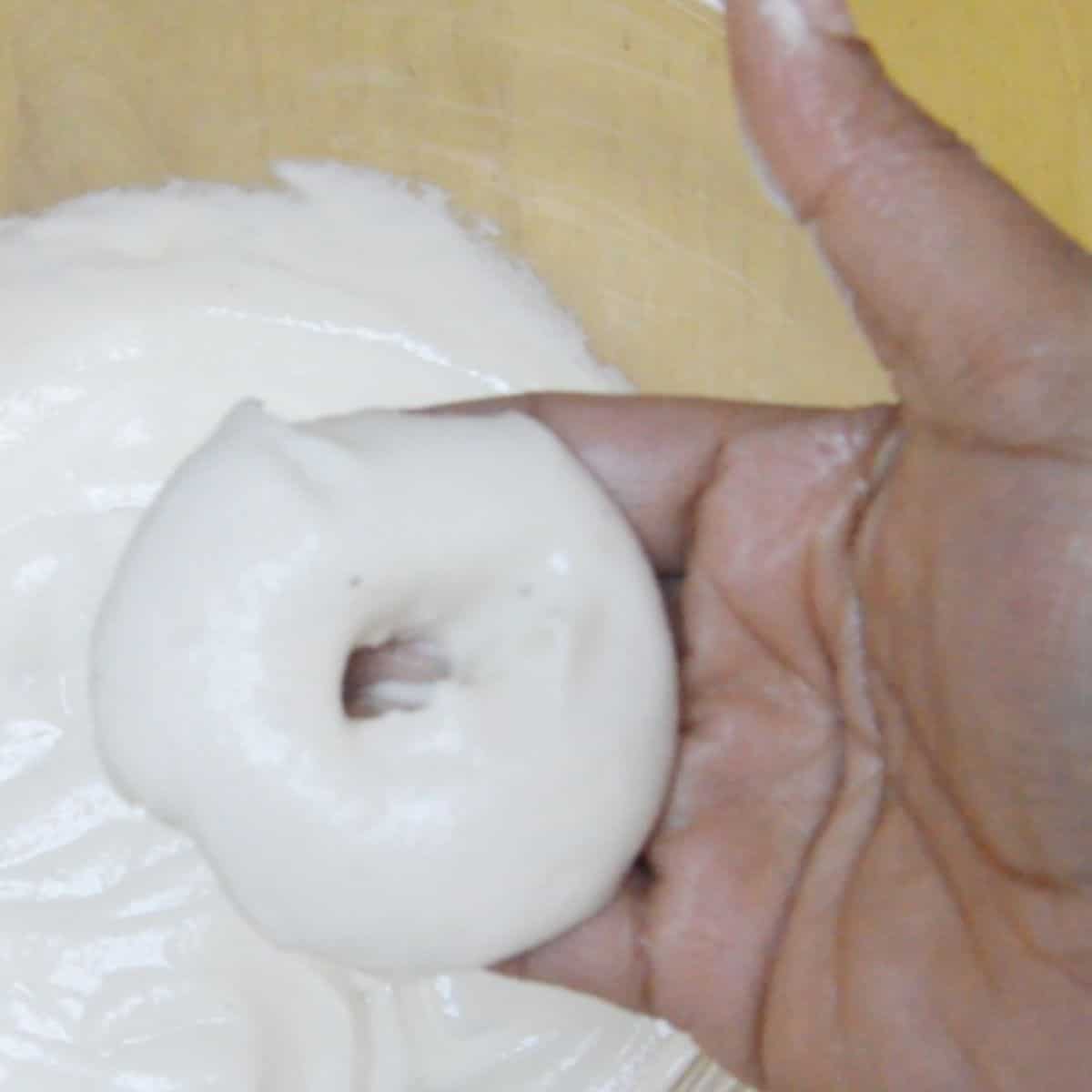
Heat oil in a deep pan or kadai over medium heat.
Dip your hand in a bowl of water. Take a small portion of the batter in your hand and shape it into a ball.
Place it on your fingers and flatten it slightly with your thumb to form a round disc with a hole in the center (similar to a donut).

Carefully slide the shaped vada into the hot oil.
Repeat the process of shaping vadas and slide them in oil. Make sure to fry them in batches and avoid overcrowding the pan.

Fry until it turns golden brown on both sides. Flip them carefully a couple of times with a slotted spoon in between for even browning on both sides.

Once the vadas are golden brown and crisp, remove them from the oil and place them on a kitchen towel to drain excess oil.
Repeat the same process of shaping and frying vadas in batches.

Serve fluffy medu vada hot with coconut chutney or sambar.
Substitutions and Variations
Extra Flavour: A pinch of asafoetida adds a lovely flavour.
Curry Leaves: Try chopped curry leaves for added flavour and taste.
Black Pepper: You could use black pepper powder or crushed black pepper instead of green chillies.
Rice: Raw rice could be used instead of rice flour. Soak a fistful of raw rice along with urad dal.
Serving Suggestions
Serve medu vada with a cup of filter coffee or rose milk tea and accompaniments such as coconut coriander chutney, tomato mint chutney or sambar as an evening snack.
Ven pongal, sambar, vada and coconut chutney is a classic south Indian breakfast.
Dip vadas in rasam to transform it into a comforting and hearty rasam vada. Check out pepper rasam and dal rasam recipes on the blog.
Transform them into perugu vada and serve as a hearty snack.
Serve it as a sambar vada by placing vadas in a bowl and pouring sambar over them.

Storage
Fridge: Medu vadas taste best when fresh and hot with a crispy outer and fluffy texture. However, you can store leftovers in the fridge in an airtight container. Use it up in 2-3 days.
Reheat: Place vadas in a baking tray and reheat in the oven until piping hot. You could reheat in an air fryer as well until they crisp up.
Batter: The vada batter could be stored in the fridge for up to 3 days. Make sure to use it up within 3 days as it turns sour later.
Tips and Tricks
Soaking Urad Dal: Soak urad dal for at least 4-6 hours. This ensures that the dal is well-hydrated, making it easier to grind into a smooth batter.
Grinding Batter: Grind the soaked urad dal with minimal water to achieve a thick and fluffy batter. The batter becomes runny with too much water and it will be difficult to shape vadas. Add water gradually and 1 or 2 tablespoons at a time while grinding the batter.
Consistency of Batter: The medu vada batter should be smooth, light, and airy. To test the consistency, drop a small amount of batter into a bowl of water and it should float.
Aeration of Batter: To make the vadas fluffy, it is essential to incorporate air into the batter by whipping it for a couple of minutes before shaping the vadas. Ensure to whip in the same direction.
Shaping Vadas: Dip your hand in a bowl of water before shaping each vada. Wetting your hands with water prevents the batter from sticking to your hands and helps shape medu vada smooth and round.
Oil Temperature: Maintain a consistent oil temperature. The oil should be hot but not smoking. If the oil is too hot, the vadas may brown quickly on the outside while remaining undercooked inside. If the oil is not hot enough, the vadas tend to absorb too much oil.
Deep Frying: Gently slide the shaped vadas into the hot oil. Do not overcrowd the pan, as it will be difficult to flip vadas. Fry them in batches.
Draining Excess Oil: Once the vadas are golden brown, remove them from the oil and place them on paper towels to absorb excess oil.
Quality of Dal: Use fresh good quality urad dal to get crispy and fluffy vadas. You can use whole skinless or split and skinned black lentils.
Quantity: Number of vadas you get from the above mentioned measurements depends on the size of vadas you make.
FAQ
There are a few reasons for vadas not turning out crispy:
- If you fry vadas when the oil is not hot enough, they tend to absorb more oil and turn soggy. So make sure the oil is hot enough and at the right temperature before frying vadas.
- Over frying or under frying vadas could affect the texture. Fry them just until they turn golden brown both sides. Ensure to flip them in between for even browning and crispiness.
There are a few reasons for vada to burst in oil while frying
- Any bits of urad dal in the batter leads vada to burst in oil.
- Ensure the rice flour is well incorporated in the batter. Any lumpy dry bits of flour left in the batter results vada to burst.
- Over aerated batter is another cause. So ensure not to whip the batter for too long.
Of course, vadas can be frozen to use later but they won't be as crispy as freshly prepared vadas. However, they are good to use in sambar vada or rasam vada.
Make a batch of vadas, place them on a tray or plate over the kitchen towel to remove excess oil and let them cool down to room temperature.
Once vadas cool down to room temperature, remove the kitchen towel, arrange vadas into a single layer on a tray and keep it in the freezer until solid.
Transfer the frozen vadas into an airtight container or ziplock bag and store it in the freezer.
Ensure to thaw vadas before reheating before you plan to consume them.
KEEP IN TOUCH
Do let me know if you try this crispy and fluffy medu vada recipe. If you like this recipe kindly consider rating it using stars in the comment section or on the recipe card to help more people find this recipe online. You can stay up to date by following me on Facebook, Pinterest, Instagram or subscribing to my Youtube channel. Or why not subscribe to my blog and get simple recipes straight to your inbox?
📖 Recipe Card

Medu Vada
Equipment
- 1 Heavy Bottom Steel Pan
- 1 Slotted Spoon
- 1 Mixer Grinder
Ingredients
1 Cup = 250ml ; 1 Tablespoon = 15ml ; 1 Teaspoon = 5ml
- 1.5 Cups Urad Dal
- 1 inch Ginger washed and peeled
- Salt as per taste
- 5-6 Green Chillies chopped, adjust to taste
- half bunch (or) ⅓ cup Coriander Leaves chopped
- 1 Tablespoon Rice Flour
- Cooking Oil to deep fry
- 5-6 Tablespoons Water adjust to get right consistency
Instructions
- Wash the urad dal thoroughly and soak it in water for about 4-6 hours or overnight.1.5 Cups Urad Dal
- Drain the soaked dal and place it in a mixer jar and add ginger1 inch Ginger
- Grind it into a smooth batter using minimal water. Add a little water at a time while grinding. The batter should be thick and fluffy.5-6 Tablespoons Water
- Add chopped green chillies, rice flour, chopped coriander, and salt to the batter.Salt, 5-6 Green Chillies, half bunch (or) ⅓ cup Coriander Leaves, 1 Tablespoon Rice Flour
- Mix well and whip batter for at least 2-3 minutes with your hands to incorporate air
- Heat oil in a deep pan or kadai over medium heat.Cooking Oil
- Wet your hands with water to prevent the batter from sticking. Take a small portion of the batter in your hand, shape it into a ball, place it on your fingers and flatten it slightly with your thumb to form a round disc with a hole in the center (similar to a doughnut).
- Carefully slide the shaped vada into the hot oil.
- Repeat the process of shaping vadas and slide them in oil. Make sure to fry them in batches and avoid overcrowding the pan.
- Fry until it turns golden brown on both sides. Flip them carefully
- Once the vadas are golden brown and crisp, remove them from the oil and place them on kitchen towel to drain excess oil.
Notes
- Soaking Urad Dal: Soak urad dal for at least 4-6 hours or overnight. This ensures that the dal is well-hydrated, making it easier to grind into a smooth batter.
- Grinding Batter: Grind the soaked urad dal with minimal water to achieve a thick and fluffy batter. The batter becomes runny with too much water and it will be difficult to shape vadas. Add water gradually and a little at a time while grinding the batter.
- Consistency of Batter: The medu vada batter should be smooth, light, and airy. To test the consistency, drop a small amount of batter into a bowl of water; it should float.
- Aeration of Batter: To make the vadas fluffy, incorporate air into the batter by whipping it for a couple of minutes before shaping the vadas. Ensure to whip in the same direction.
- Quantity: Number of vadas you get from the above mentioned measurements depends on the size of vadas you make.
- Shaping Vadas: Wet your hands with water before shaping each vada. This prevents the batter from sticking to your hands and helps shape medu vada smooth and round.
- Oil Temperature: Maintain a consistent oil temperature. The oil should be hot but not smoking. If the oil is too hot, the vadas may brown quickly on the outside while remaining undercooked inside.
- Deep Frying: Gently slide the shaped vadas into the hot oil. Do not overcrowd the pan, as it can lower the oil temperature and result in oily vadas. Fry them in batches.
- Draining Excess Oil: Once the vadas are golden brown, remove them from the oil and place them on paper towels to absorb excess oil.
Nutrition
Related
Looking for other deep fried recipes like this? Try these:
Pairing
These are my favorite dishes to serve with medu vada:

Welcome to Flavours Treat. I share vegetarian recipes made with wholesome, mostly fresh ingredients. Every recipe has easy-to-follow instructions with process shots (detailed step-wise pictures), a short video and lots of tips to help your cooking journey. Read more


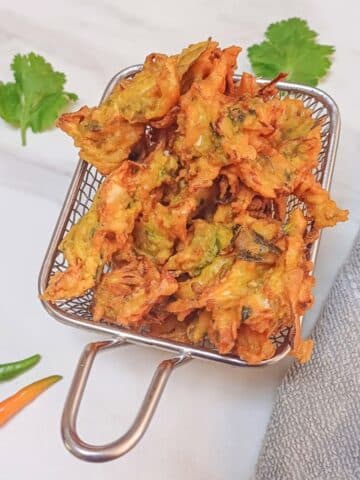
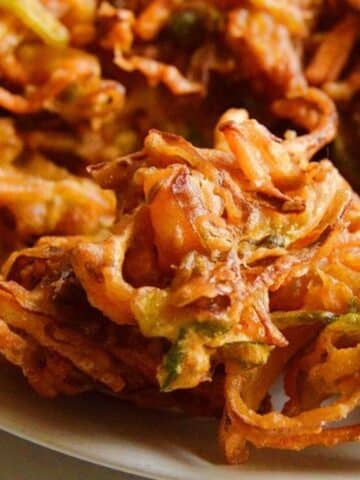
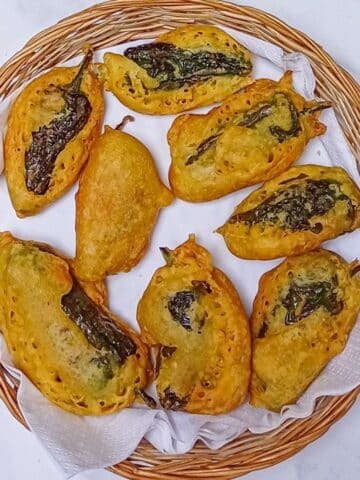
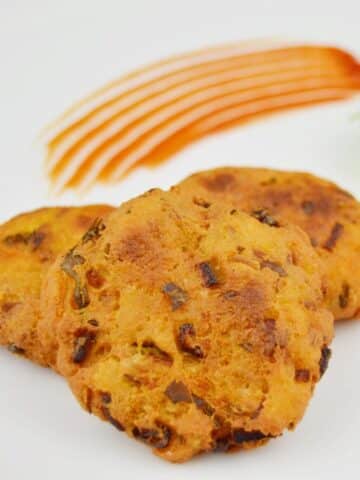
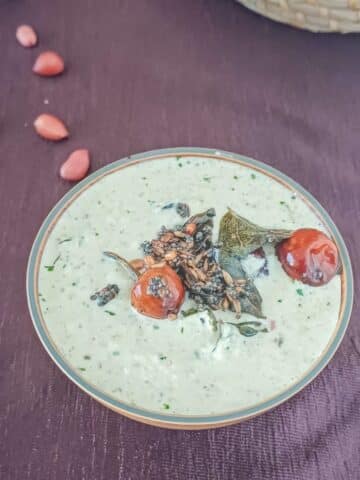
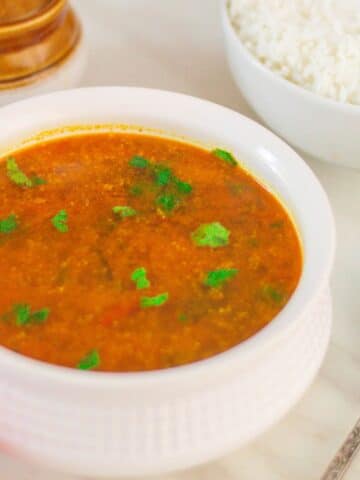
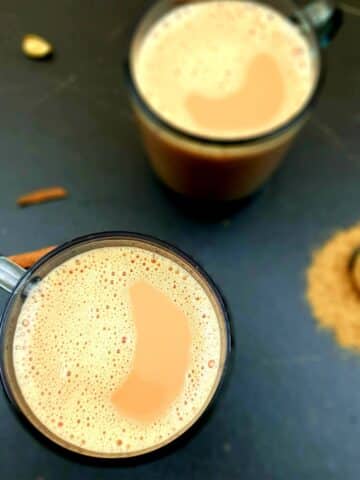

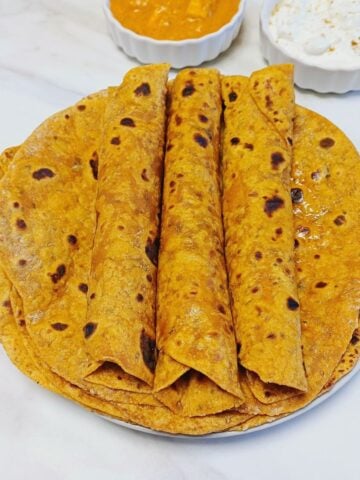



Leave a Reply